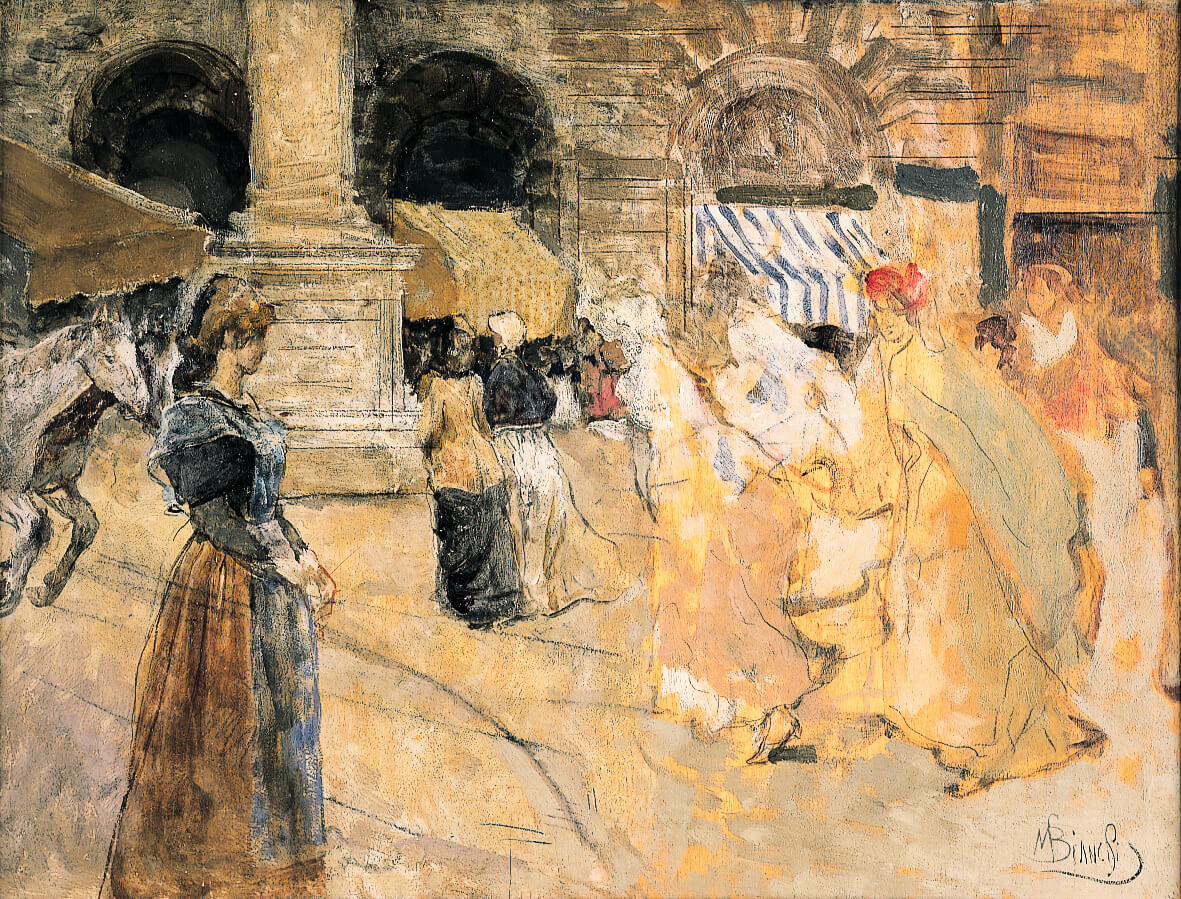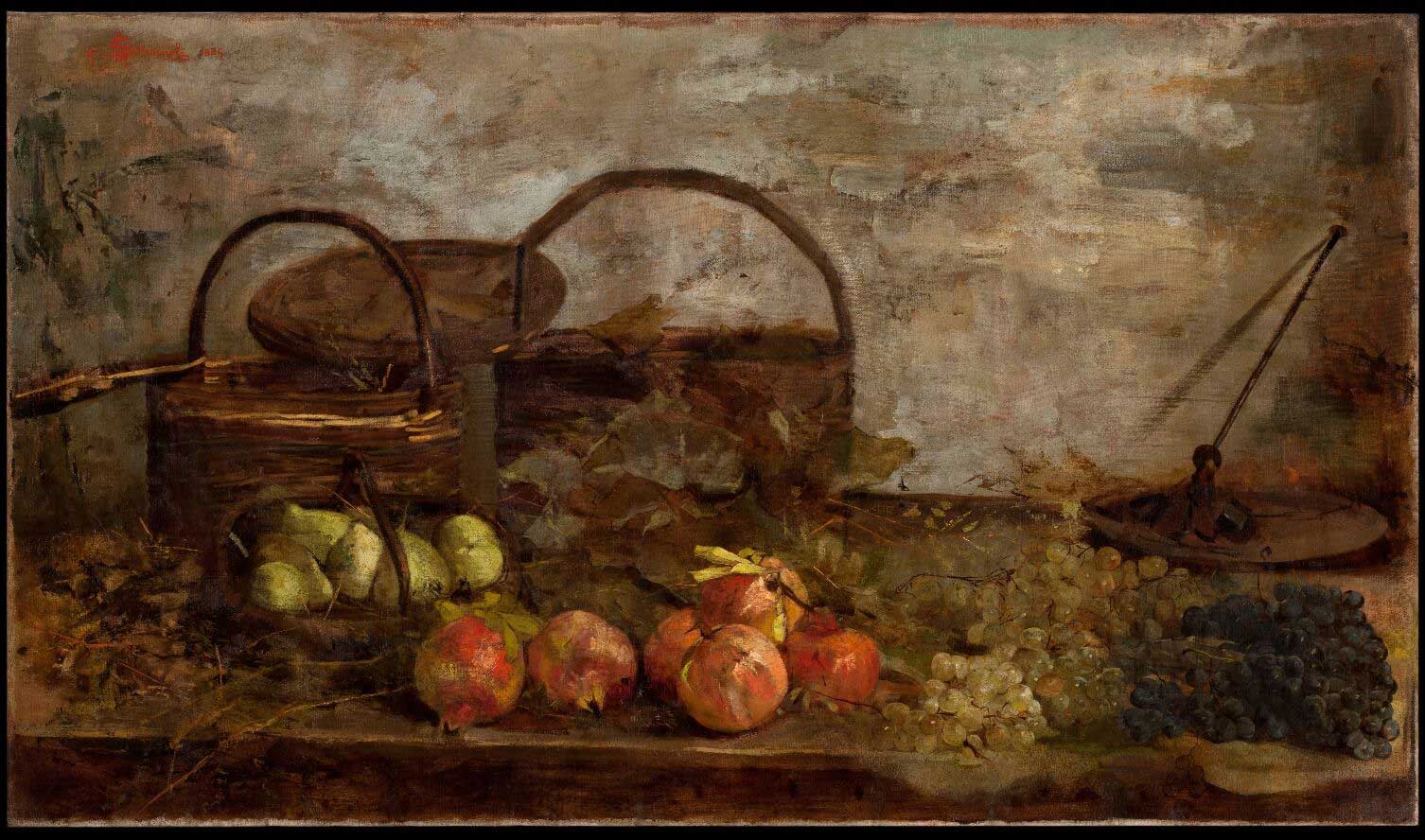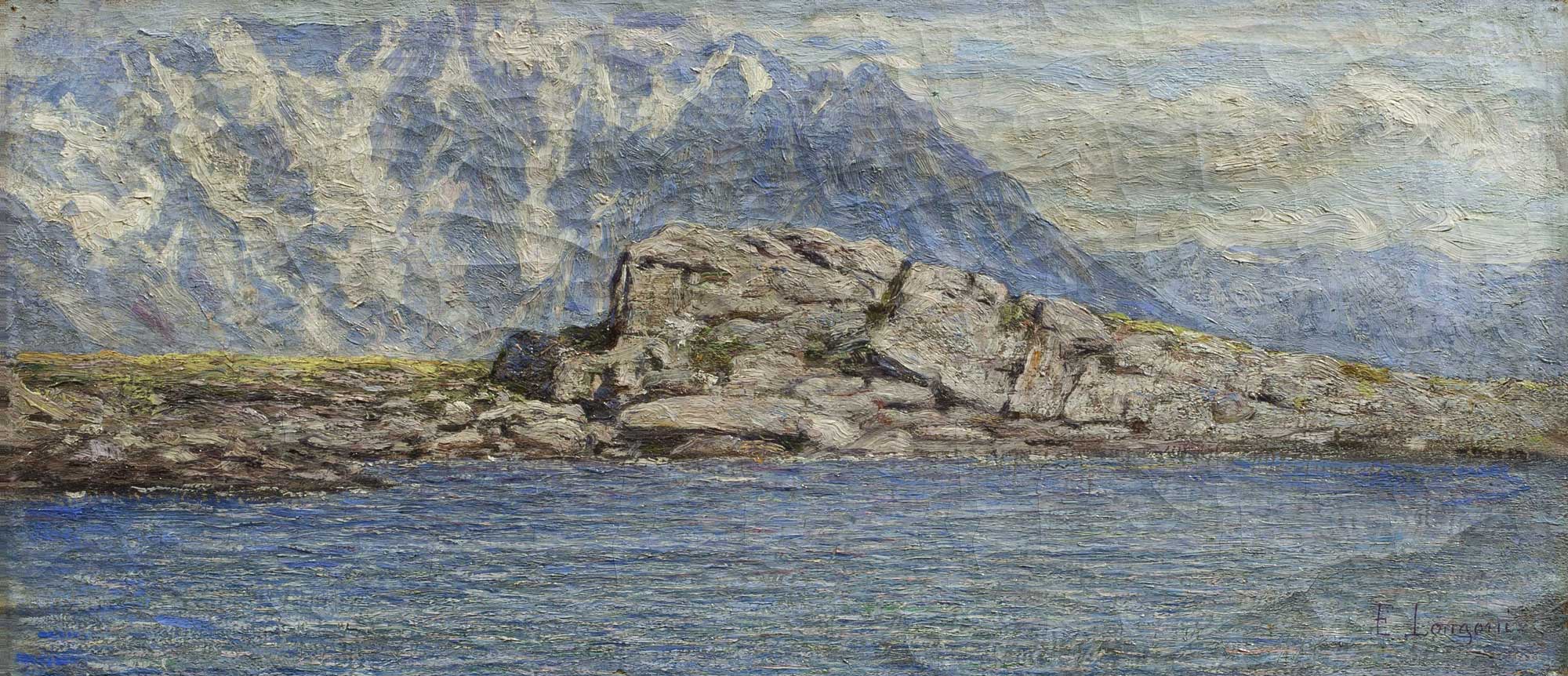The Cornèr Bank Collection
This section presents some of the collection of paintings displayed at the bank's head office in Lugano. To find out more: comunicazione@corner.ch
This section presents some of the collection of paintings displayed at the bank's head office in Lugano. To find out more: comunicazione@corner.ch
Mosè Bianchi Monza, Milan 1840-1904
Oil on wood, cm 38,5 x 50
Giovanni Sottocornola Milan 1855 – Milan 1917
Oil on canvas, cm 75 x 130
Emilio Longoni Barlassina, Milan 1859 – Milan 1932
Oil on canvas, cm 35 x 74

Mosè Bianchi was the son of a portrait painter, and attended the Brera Academy of Fine Arts in Milan, interrupting his studies in 1859 to take part in the war of independence as a volunteer in Garibaldi’s Cacciatori delle Alpi (Alpine Hunters). In 1862 he opened a studio with the Ticino artist Ernesto Fontana, and was represented at the annual Brera exhibition with a painting on an historical subject. His frequent participation in Brera exhibitions attracted considerable popularity, and his painting began to explore romantic and literary subjects, with a marked predilection for genre scenes. Through the Parisian art dealer Adolphe Goupil, Bianchi came into contact with the international exhibition circuit, and in 1874 won the Prince Umberto Prize in Milan with a portrait, repeating this success in 1894 with a historical genre scene and in 1900 with a rustic interior.
The characteristics of the subject and its environment indicate that this lively urban scene dates from the brief period when the artist was living in Verona, between 1898 and 1899. The thin oil paint, characterised by bright, clear colours, deliberately revealing the outline of the underlying fluid design and the tonality of the wood beneath, are characteristic of the artist’s last creative period, in which, as here, he takes a renewed interest in structured spaces, with the architectural background given a primary role.
Hide commentary
Sottocornola was from a working class family, and at the age of twenty managed to enrol at the Brera Academy of Fine Arts, where along with his classmates Emilio Longoni, Gaetano Previati, Attilio Pusterla and Giovanni Segantini he shared the creative and experimental ferment of a new generation of artists, ready to break onto the scene of Lombard naturalism, by now in its maturity. His work had its first public exposure in 1882 at the Brera annual exhibition, where he presented four paintings - portraits and a genre scene. At the same time, he was producing life studies, from still lives to figure paintings and interiors. Sottocornola became one of the leading figures in the glory days of Lombard painting at the end of the 19th century, distinguishing himself in still life and figure painting and landscapes, where from the 1890s he experimented with a refined divisionism technique, at times in conjunction with subjects communicating a social commitment.
The canvas in the Cornèr collection displays a clearly simplified painting technique, particularly evident in the way the colours are spread and to a lesser extent in the design of the work. Also in 1889, at the annual show of the Società Permanente di Milano he exhibited Basket of grapes, followed at the first Brera Triennale in 1891 by Grapes (private collection), a cascade of bunches of red and white grapes and vine leaves. This is a superb composition of exemplary realism, opening out on the horizontal axis, painted on wood, similar to the canvas in the collection and many of his still lives.
Hide commentary
The exemplary life and artistic career of Emilio Longoni, one of the most significant and highly regarded artists in the latter part of the 19th century, particularly as an exponent of divisionism, spans more than half a century of the history of Italian figurative culture. After his beginnings at Brera in 1878, his allegiance to the realist idiom in the 1880s led to some early chefs d’oeuvre, while his conversion to divisionism around 1890 brought significant recognition for the artist both in Italy and abroad.
La scogliera (The cliff) is one of his first successes in the evolution of his mountain landscapes from natural representation to symbolism - although this too was just a brief phase in an artistic trajectory toward the complete dissolution of the subject, lucidly and resolutely pursued by Longoni, culminating in the canvases of the last fifteen years of his life. A contemporary photograph records a sketch for the canvas now included in the Cornèr collection, drawn at altitude. From this image, and perhaps other life studies, Longoni extracts the natural elements that transfuse the final work for presentation to the public.
In “La scogliera” (The cliff), the striking, violent chromatic intensity of the sky-blue tones is skilfully interrupted by the towering rock formation in the centre, matching the immensity of the surrounding space, caught between the reflection in the water and the mountain range beyond. The magnificent unadulterated sky-blue produced from pure lapis lazuli and the texture of subtle horizontal threads of colour, adjoining and superposed on each other, perfectly render the vibrating tones of the icy waters of the lake.
Hide commentaryThis section presents the series of art books published by the bank.
To find out more: comunicazione@corner.ch
September 2018 saw the publication of the eleventh volume in the series, a catalogue of an exhibition that was the culmination of a remarkable project. Indeed, two years earlier, Cornèr Bank had made a successful bid at an auction for “Vecchie Calzette”, a work by the divisionist painter Angelo Morbelli and the sixth in a cycle of his paintings that he christened “A poem of old age”. This inspired the idea of recovering the other five works and staging a second unveiling of the cycle (fully restored) in Venice, where - in its entirety - it had been exhibited in 1903. With the support of Venice’s Fondazione Musei Civici, the exhibition was staged at the Ca’ Pesaro Galleria Internazionale d’Arte Moderna. This outstanding divisionist painter knew, better than others did how to give utterance to the suffering and solitude present in the hearts of the needy and in the silence of the empty rooms of alms-houses. Aided by the text and the images, the reader tunes into Morbelli’s sensitivity and can admire his marvellous painting technique.
A further publishing endeavour was completed in 2015, having originated from an idea of Paolo Cornaro. The volume about Antonio and Giuseppe Chiattone – two brothers who were both sculptors – gave effect to a wish to focus attention on the two artists and on art collectors from Ticino. It did so by tracing their full biography and presenting the first detailed account of the works they undertook or planned in Ticino Canton and internationally. This book, the tenth in the Cornèr Bank art publication series, benefited from the unstinting cooperation of Lugano’s Art Museum (MASI) and of SUPSI, which saw to the restoration of the plaster cast of Empress Elizabeth of Austria, previously on view in the courtyard of Lugano’s Palazzo Chiattone.
The sixtieth anniversary (2012) of the foundation of Corner Bank was commemorated through a monograph about Adolfo Feragutti Visconti, Ticino’s renowned painter, born in Pura in 1850. In addition to including a considerable number of works that belong in private collections, the monograph reproduces all of his pictures held in public collections in Switzerland, Italy, and elsewhere. This volume is the first to cover the entire output of this painter, who went on to further his artistic training and to feature in exhibitions in Italy, Argentina, and other countries. Moreover, during the course of the work numerous previously undiscovered documents came to light.
Sandra Torriani
Tel. + 41 91 800 52 34
sandra.torriani@corner.ch
